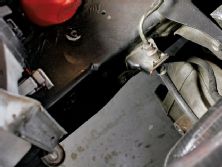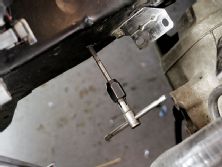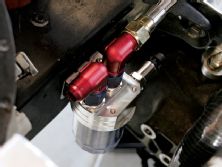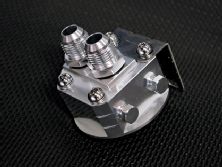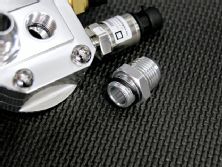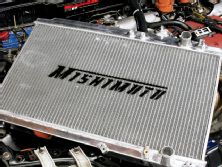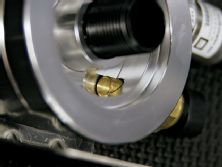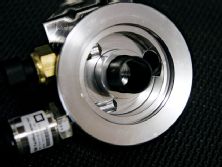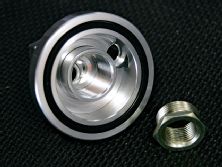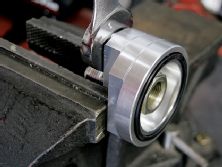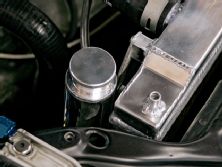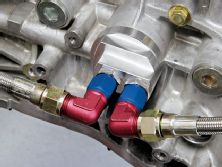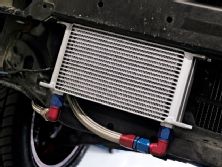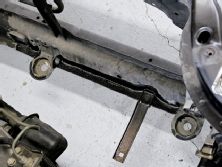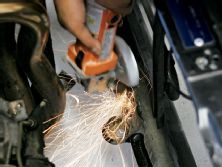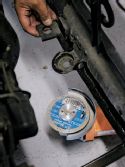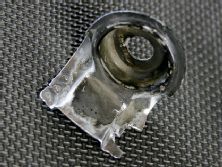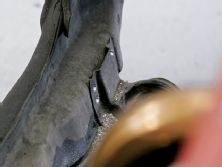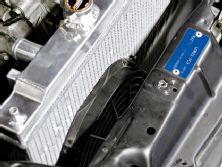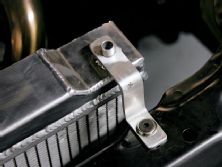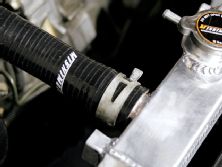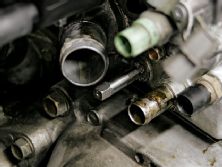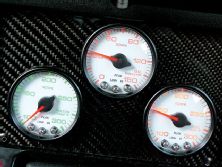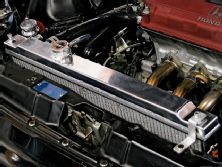Cars and numbers go together. Horsepower and torque figures get the most attention but are followed closely by rpm and mph. Pounds of weight, millimeters of clearance, pounds per square inch, and coefficients of drag are thrown around every now and again too. Any of these yield bragging rights. Yapping about your 10-second, 600hp hatchback is easy to do. People will listen if it's true, sometimes even if it's not. Bragging about how low your engine's oil or coolant temperatures are though isn't quite so impressive. It should be though. The fact that cool air is worth horsepower is yesterday's news, but did you know that low oil and cooling system temperatures could also be good for a few horsepower and keep your engine alive longer? They could.
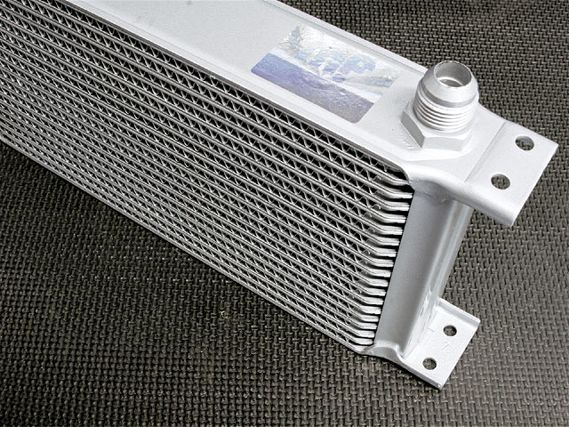 | 1) Oil cooling begins with the cooler itself. MFactory's bolt-on kit includes an aluminum 19-row, front-mount, air-to-air unit with provisions for mounting it just about any way you can imagine. It's sized just right to allow proper cooling but not take away too much space underhood.
| 1) Oil cooling begins with the cooler itself. MFactory's bolt-on kit includes an aluminum 19-row, front-mount, air-to-air unit with provisions for mounting it just about any way you can imagine. It's sized just right to allow proper cooling but not take away too much space underhood.
Oil Cooling
A common misconception concerning fluid dynamics is that cooler is better. Although generally speaking it usually is, there are exceptions. Before assuming you need the biggest oil cooler money can buy, it's important to understand how oil works and why your particular engine might benefit from running cooler. Oil needs to operate within a given temperature range in order to provide the appropriate viscosity the engine requires. Too high and it will overheat the system, too low and it will exhibit way too much friction. The same is true of oil pressure and volume: Excess of either robs power and can raise temperatures so be sure to think twice before your next top off. The key is using the correct oil viscosity and making sure it operates at the correct temperature. If you're reading this chances are you're already using synthetic-based oil in your engine. Synthetic oils are better suited for higher temperatures-at least 40 degrees F higher than conventional oils. However, neither synthetic nor conventional oils function well at temperatures below 150 degrees F. The only real way to know whether or not you would benefit from an oil cooler is to record your initial oil temperature readings and see where you're at. A properly set up oil cooler can do more than just cool oil. Oftentimes water temperatures will drop due to the oil's lower temperatures. It's not uncommon to see water temperatures drop by as much as 10-20 degrees F without ever touching the cooling system. Either way, if you're in the market for an oil cooler, make sure you pick something up that's sturdy and can withstand some abuse. Steel braided lines and AN fittings are also a must when it comes to a long-term oil cooling solution. MFactory Competition Products takes all of this into account with its universal Honda oil cooling system. The kit works with most Honda applications and bolts on with just a couple hours worth of work. Read on for proof.
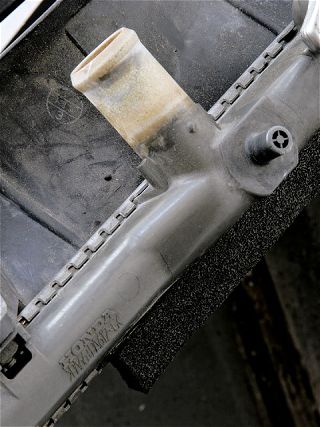 | The '92-'95 Civic's stock radiator is pretty wussy. It's plastic, it's skinny, and it just doesn't cut it once a bigger engine is swapped into place.
| The '92-'95 Civic's stock radiator is pretty wussy. It's plastic, it's skinny, and it just doesn't cut it once a bigger engine is swapped into place.
Water Cooling
Sure, oil temperatures are important but they've never been important enough for most OEMs to fit vehicles with oil temperature gauges. Of course, they do when it comes to water temperatures. It's funny what a lot of heat and a little steam can do: lifted cylinder heads, blown head gaskets, cracked and warped blocks, even poor emissions-it's capable of all that and more. Internal combustion engines require heat to operate effectively but, once modified-due to a variety of factors like compression ratios, forced induction, and even engine bay space constraints-they're often in abundance of it. There are a number of methods by which to decrease cooling system temperatures, the most obvious of which is to swap in a larger radiator. Radiators are simply heat exchangers that dissipate the heat exhibited by the water and coolant mixture with airflow. The coolant mixture picks up heat from the engine and transfers it to the outside air by means of the radiator. The more airflow the radiator can provide, the more capable it is of cooling. Thicker, taller, or wider radiators can all accommodate lower temperatures, although those that offer the most frontal area (taller or wider) will generally provide the greatest difference. Take the '92-'95 Civic for example: Like most Hondas, you can't exactly swap in a taller radiator due to hood and ground clearances but there are thicker cores offered like that from the Del Sol VTEC model that bolts right into any '92-'00 Civic chassis. Unfortunately, the Del Sol radiator features the same size frontal area-the only thing bigger and remotely compatible being from the '94-'01 Integra, which is exactly what we opted for. We turned to Mishimoto for our cooling system needs and they provided us with the large-core, aluminum '94-'01 Integra radiator along with upper and lower silicone hoses. Installation in the DC2 Integra is a relatively simple process because the Mishimoto core bolts right in place but, as you'll see, the process is a bit more involved when shoehorning such a core into a Civic.
CONNECT Mfactory Competition Products
www.teammfactory.comMishimoto
www.mishimoto.comProparts
www.propartsllc.com

